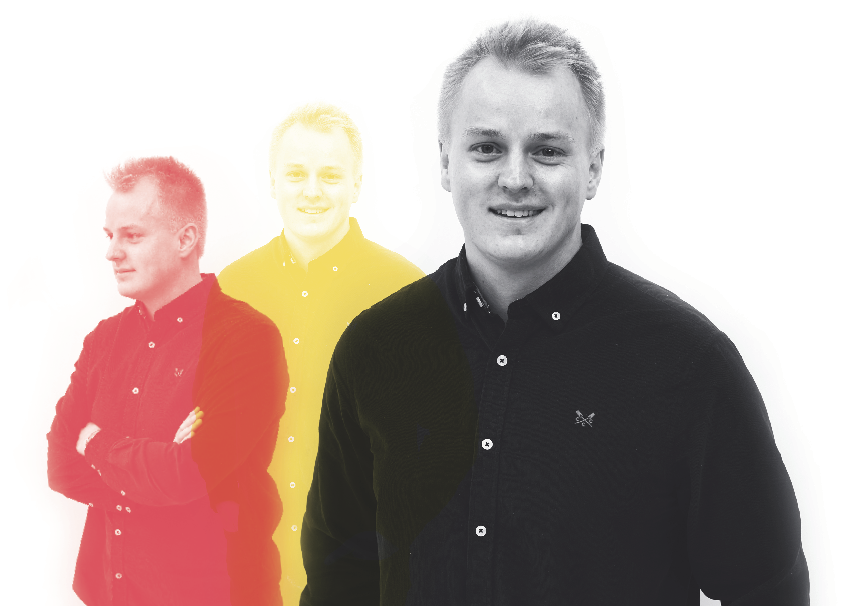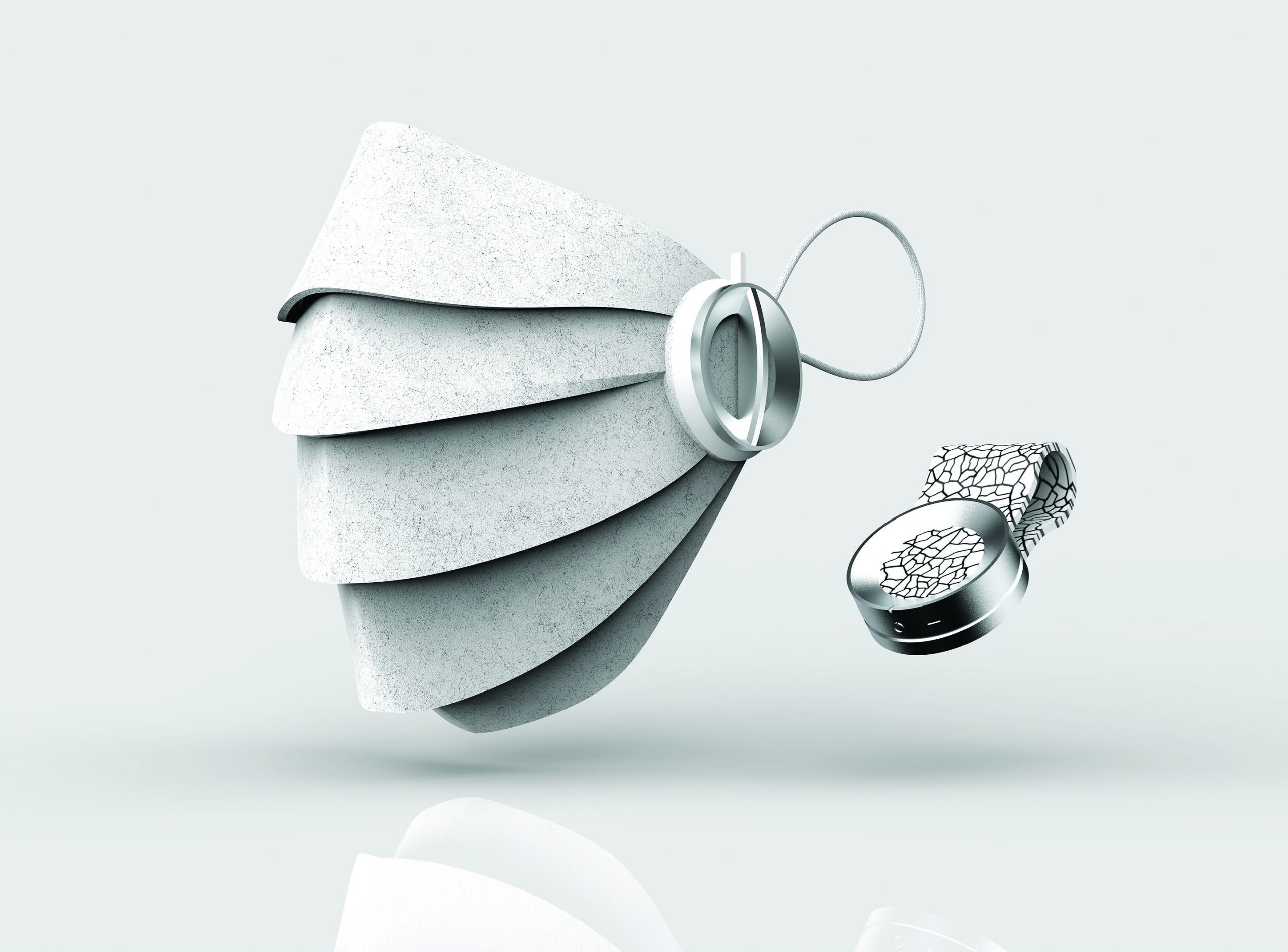
Final year project
Reducing the intake of airborne particulates by improving the effectiveness of… [Read more]

Pure-O2 face mask and wearable
Pure-O2 is a fully custom fit, intuitive face mask that ensures a safe and comfortable fit for all users. The shell of the mask has an elastic seam that can be fully adjusted and tightened around the user’s face to create a perfect seal every time. Combine this with innovative filter technology, Pure-O2 offers protection from 99.9% of airborne particulates as well as ensuring a comfortable and practical user experience.

Pure-O2 user trial
Nine of the top ten most air polluted countries are in Asia. It was important to test the product with the intended user and to style it appropriately to the Asian market.
Conducting a comprehensive user trial that assessed the Pure-O2 design as well as critiquing existing products on the market, informed the aesthetic direction and the user interaction with the design.

Pure-02 wearable
In a world saturated with wearable technology, the Pure-O2 wearable aims to convey the ambient air quality to the user without the need for screens and lights.
The wearable measures the ambient air quality, and if the AQI is 60 or above (potentially hazardous to health), the strap of the wearable changes colour informing the user that it is time to put on the mask.
The versatile design lets the user wear the device wherever they want, for example a shirt sleeve or bag strap.

Pure-02 innovative fitting system
The fit of any face mask is crucial to its protective capabilities. Any gaps or spaces around the seal act as a straw, sucking polluted air into the users lungs. Pure-O2 comes in three sizes, small medium and large. This allows users of all face shapes to pick the size most suited for their face shape. Pure-O2 takes the fit of the mask further by allowing the user to tighten and loosen the mask as they see fit. The mask has an elastic seam that tightens across the users face by turning the dials on the fit system shown above. This ensures a custom and fully effective seal for any user.

Improving the sleep environment for astronauts on long duration space missions
Sleep is extremely important for mental and physical well-being. Astronauts on the International Space Station are subjected to 16 sunrises and sunsets every 24 hours. This has a dramatic impact on the astronauts circadian rhythm which can lead to serious sleep disorders. This design aims to induce phase shift by using short wavelength blue light therapy. The blue light resets the users circadian rhythm and can be used to promote a healthy and natural sleep cycle. The hood design is hands free to ensure that the light therapy does not interfere with the users workload. In combination with the hood's ability to control the users ambient sleep environment, this design ensures natural sleep for extended space missions and potential manned missions to Mars.

Improving the sleep environment for astronauts on long duration space missions
As well as controlling the circadian phase shift of astronauts in space, controlling the sleep environment is equally as crucial. Astronauts are exposed to high noise levels, C02 build up around the mouth, as well as high light levels and drastic temperature changes.
The hood design aims to give the astronaut more autonomy over their sleep environment by introducing active noise cancelling and control over the amount of light entering the hood. The environment can be controlled and programmed by the user to encourage a natural sleep cycle and aims to reduce the need for pharmacological interventions.
The design can be retrofitted onto sleeping bags similar to those currently on the ISS, and has potential uses for treating sleep disorders and jet lag.

Computer aided ergonomics
Vehicle design and the human interaction with vehicles is important in ensuring the safety of both the driver and those around them. The above image documents a vehicle audit carried out, and the subsequent investigation into the layout of the car interior. Through the use of SAMMIE, I was able to test a simulated car interior and redesign the cockpit to ensure a more ergonomic fit for a wide range of users. SAMMIE is a useful tool in simulating human interactions with potential designs and as such has been a useful tool to master.
Christian Leggatt
I am a Design Ergonomist. My work combines industrial design techniques with a research based, user centred approach that aims to produce well developed human focused designs.
Human factors is key to designing impactful products, and as such I aim to keep the user at the forefront of all my design decisions. My work is heavily based on the user centred principals I have learnt through my degree and industrial placement. I chose to redesign a face mask for my Final Year Project as it presented a unique and difficult human factors challenge. Throughout the project I aimed to keep the target user engaged in the design process, undertaking user trials and focus groups with my market audience. Combined with my industrial design skills, I aim to bring a well rounded approach to my design process.
Throughout my university career I have been particularly drawn to the ergonomics of designing for extreme environments. My studies have taught me the issues surrounding extremes in vibration, temperature and light, as well as the challenges of designing products for use at high pressures and altitude as well as hyper and micro gravity. This is a key interest of mine and I hope to build upon my study of these environments in my future career.
My study and interest of vehicular design has led me to undertake vehicular audits, to critique and redesign car interiors to ensure an ergonomic fit, as well as to learn SAMMIE, a CAD resource that allows you to simulate a users interaction with your design.
Overall, I aim to bring a well rounded and user centred approach to my design work, and I will carry this ethos with me into the design world.
Final year project
Reducing the intake of airborne particulates by improving the effectiveness of face masks
Awards
'20 Diploma in Professional Studies
Experience
I completed a year long placement with FIRA International as an Assistant Ergonomist. The position allowed me to hone the skills I learnt in the first two years of my degree in a professional setting working along side experts in the furniture industry. I was able to work with notable clients on both short and long term projects. Throughout the placement I was able to plan and conduct user trials as well as carry out critical assessments of products against the relevant standards. Although challenging, the time I spent on placement reinforced the ideology of user centred design in my design ethic and taught me valuable skills when interacting with target users and products.
Over the course of my placement I was able to complete a week long internship at Orangebox. Working in a small team, I was able to contribute to a live brief as well as pitch key research findings to aid in the products development. Although it was only a small glimpse into the workings of a furniture design company, it gave me valuable experience and information on how to work effectively in a fast pace design environment.
Placements
July 2018 - July 2019
Assistant Ergonomist, FIRA